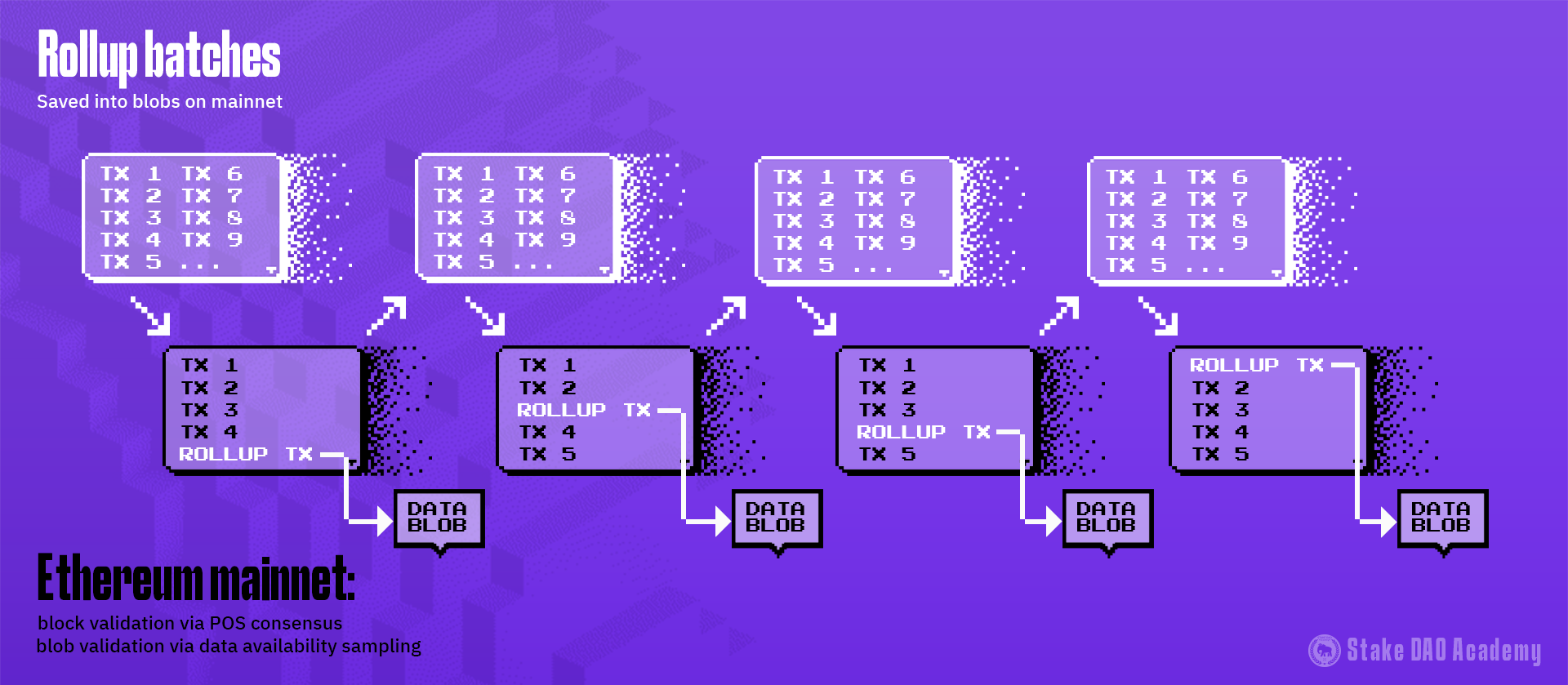Scaling of the Ethereum network is a multi-faceted effort to combat congestion, making the ecosystem cheaper and faster.
The ultimate vision is for a second layer of associated networks, typically rollups, to process the majority of users’ transactions, while the underlying Ethereum blockchain provides a guarantee of decentralised security, underpinning it all.
Rollups reduce the congestion bottleneck of mainnet by executing batches of transactions off-chain. The contents of each batch are reported to the Ethereum baselayer, thereby inheriting its proof-of-stake security, while validity is proven via either challenge periods or zero-knowledge proofs.
Although the increased capacity of rollups offers lower transaction fees than mainnet, more efficient integration of rollup data can lead to further increased performance. If Ethereum is to reach the throughput needed to address mass adoption, it requires a new way to handle data on mainnet, referred to as sharding.
A common technique in handling large databases is to split the total workload. This creates a network of multiple shards, each of which has access to only a part of the total data. Each shard only needs to process the data available to it, dramatically increasing the overall throughput.
A version of sharding is to be implemented on Ethereum, whereby validator nodes do not need to read rollup data, which will be saved into blobs within regular blocks. However, in order to preserve security of the network, the solution must be trustless and allow for validation between ‘shards’.
Ethereum’s security is derived from its decentralisation across thousands of individual validators. Although sharding will effectively split the network into smaller units, random sampling of blobs will check for ‘data availability’, allowing for validation across the network and maintaining overall security.

While sharding will introduce extra data capacity to the network, the EVM itself does not read the contents of the blobs, which contain information on rollup batches, as these are verified through other means. The initial phase (known as proto-danksharding) is focused only on increasing data availability but, ideally, will progress to include sharded execution of the EVM, too, in the future.
In addition to scalability benefits, sharding will lower the barrier to entry for potential validators, increasing participation (and therefore security and decentralisation) across the entire network. The alternative, of an ever-bloating global state, would present centralisation risks, as validators would require enormous capacity in order to run a node.



